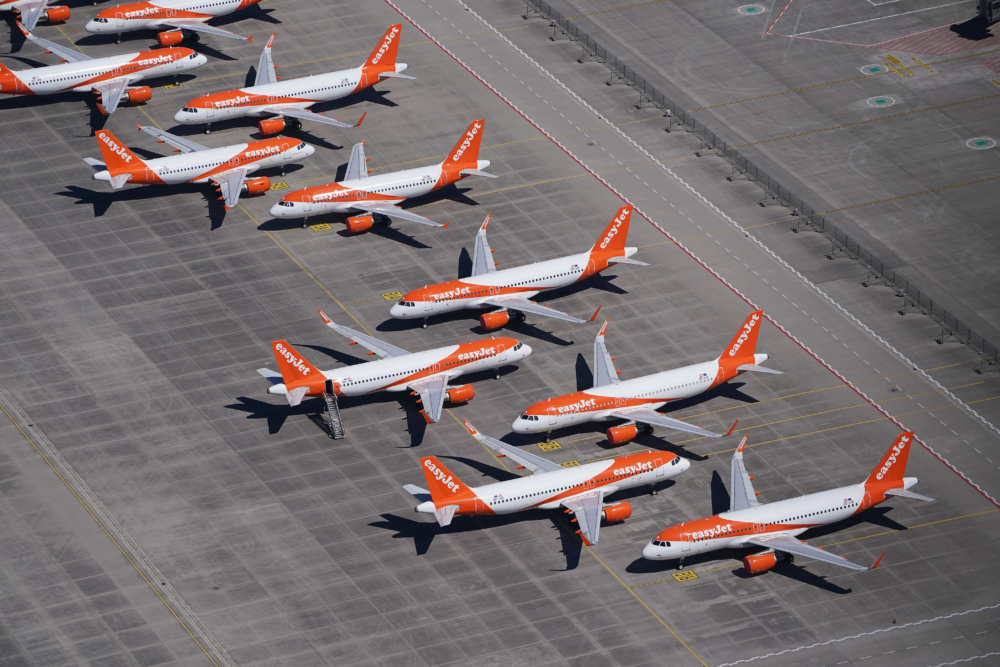Every penny counts in the aviation industry. This factor is even more significant in the current unpredictable climate. As a result, airlines are turning to modern technology to optimize operations. One partnering with airlines in this field is Aerogility. Simple Flying caught up with Phil Cole, the outfit’s civil aviation business manager, about how his firm is maximizing airline fleets amid the current conditions.

Preparation is key
The management of fleets is essential to how successful a carrier can be. Getting factors such as scheduling wrong can lead to problems such as costly delays, which can be critical to a business. Aspects such as maintenance can also increase downtime, leading to greater unpredictability. Thus, Aerogility seeks to give a better picture of how planes perform within their specific context. Subsequently, operators can resolve complex issues to make more informed and cost-effective decisions with their fleet.
Working with prominent names such as easyJet and SAS, Aerogility offers accurate maintenance, repair and overhaul (MRO) forecasts and schedules. Rather than going through tedious manual processes, operators can use the cloud-based solution to predict the future status of their aircraft under numerous scenarios. Therefore, they can optimize their strategies and adapt effectively.

An in-depth look
Aerogility’s offering includes the automation of daily maintenance planning such as power plant removals, landing gear overhauls, and engine shop visits. In practice, Cole explains that his company creates a plan for its customers based on actions such as the removal of drivers on the engines. Clients can then manipulate the plan and start to adjust the work scope. So, for example, if a powerplant becomes due based on the core module, operators can then decide whether to include the rest of the engine in the work scope for a shop visit.
With the software’s help, airlines can also produce a detailed cost analysis of what’s coming up in the future. Moreover, Aerogility has a robust and complex financial reporting tool. For instance, customers can look at depreciation provisioning on heavy base checks and related powerplants and shop visits. So, carriers can run a scenario that will produce a budget and a cash flow forecast, which is a robust additional function around a base agent model.

A clever solution
The AI multi-agent model holistically covers all the aircraft in an airline’s fleet as well as the “whole maintenance and engineering planning organization and supply chain.” Aerogility explains that the software’s intelligent agents are effectively ‘actors’ in the model. In other words, they act as a digital twin of an operation. In a simulation, the actors play out the role of the carrier’s planes, systems, procedures, and employees. The simulation outputs are graphic and notably realistic. The resulting insights then allow operators to compare one option against another.
These factors have been significantly valuable amid the conditions brought about by the global health crisis. Carriers were forced to ground their fleets, leading to changing patterns in maintenance and unpredictable deployment trends.
“The great thing you can do with something like Aerogility is the creation of long-term parking tracks. We were able to park those aircraft that were going into long-term storage and then see the effect that would have on the plan. Most significantly, we saw that as a result of long-term parking, a lot of aircraft were, in theory, going to have events that were driven by calendar days now ‘due’ or ‘overdue.’ And how do you deal with that?” Cole shared with Simple Flying
“We actually made a change to our software to allow our customers to apply the variations that have been approved by Airbus and the like. Airlines can actually say, ‘Alright, I’ve been allowed to extend this check by 300 days or so.’ And they can apply that to their plan and rerun it. Then, they’ll be able to see when the next maintenance event becomes due. So, they don’t have a whole bunch of overdue red items on your plan anymore because they’ve had an allowed extension applied to them.

Stay informed: Sign up for our daily and weekly aviation news digests.
Long-term mentality
Overall, Aerogility was able to initially help carriers amid the pandemic in terms of seeing the impact of parking. After that, the company adapted with the airlines to help them deal with brand new challenges in the market.
The aviation industry will continue to face significant challenges in this next chapter amid the ever-changing market climate. However, solutions such as Aerogility’s will prove to be helpful in the long term.
What are your thoughts about Aerogility’s solution? What do you make of the way airlines are using technology to adapt? Let us know what you think in the comment section.
from Simple Flying https://ift.tt/312aKHd
via IFTTT
Comments
Post a Comment